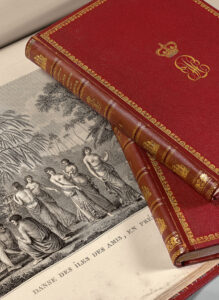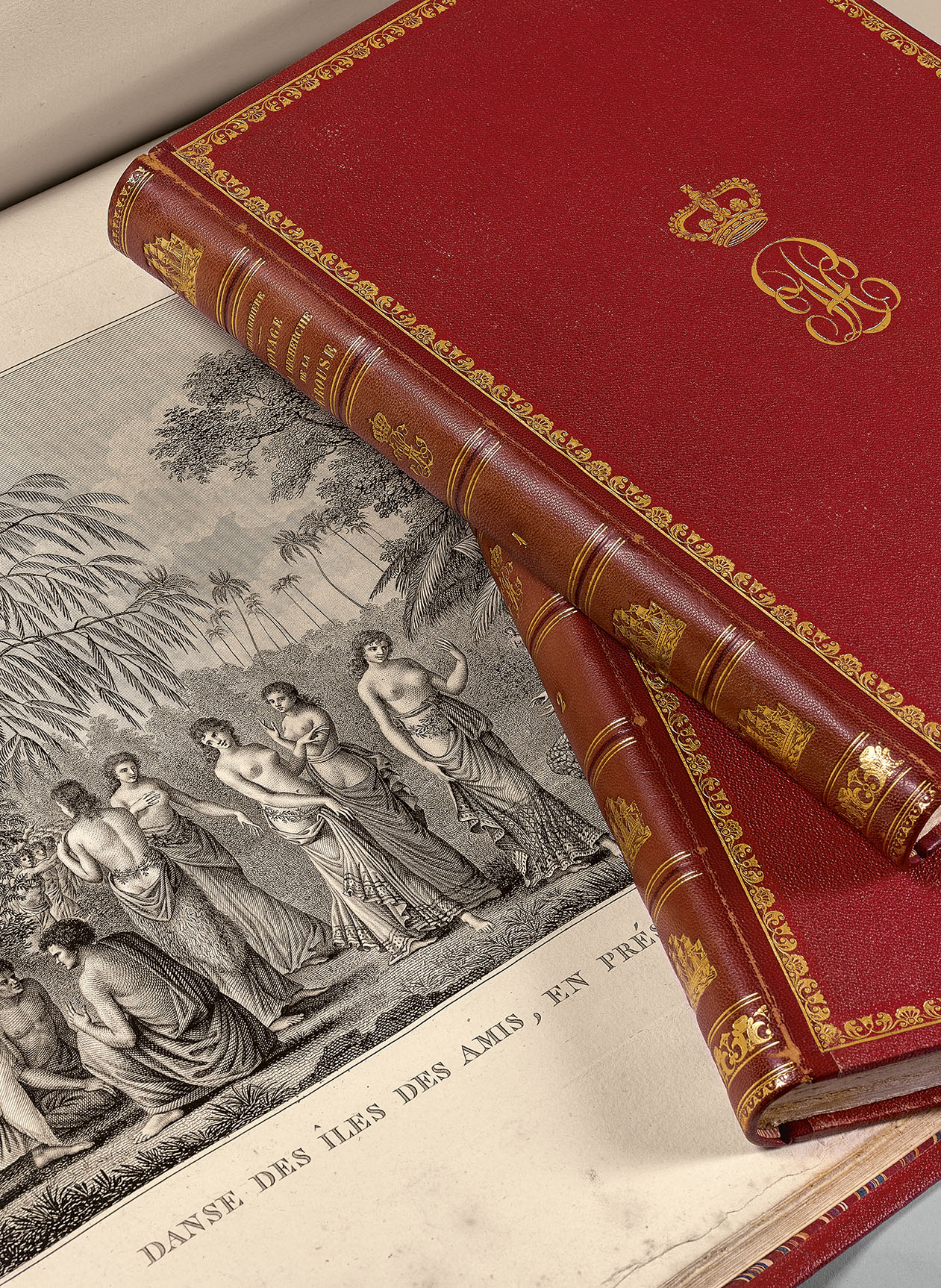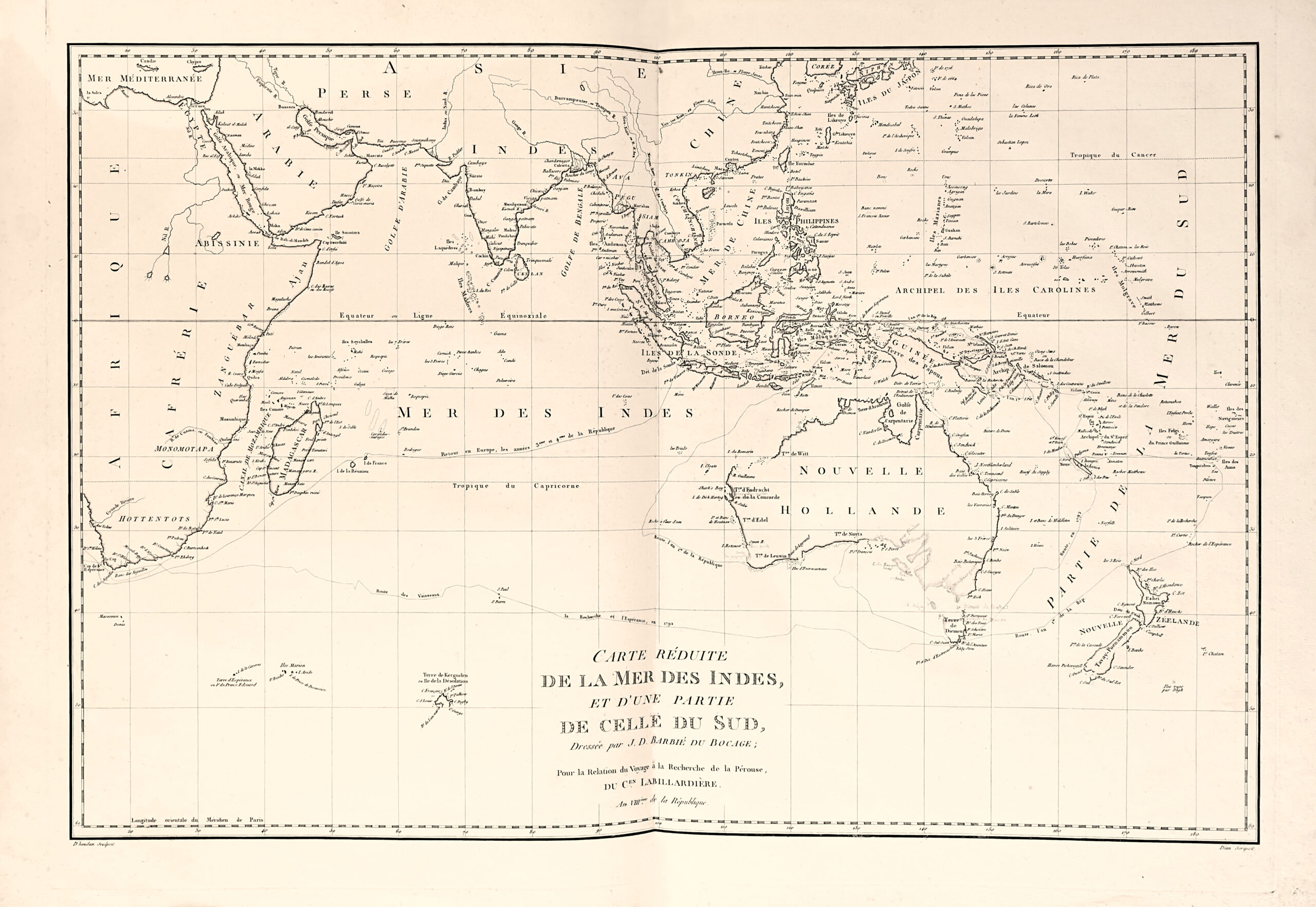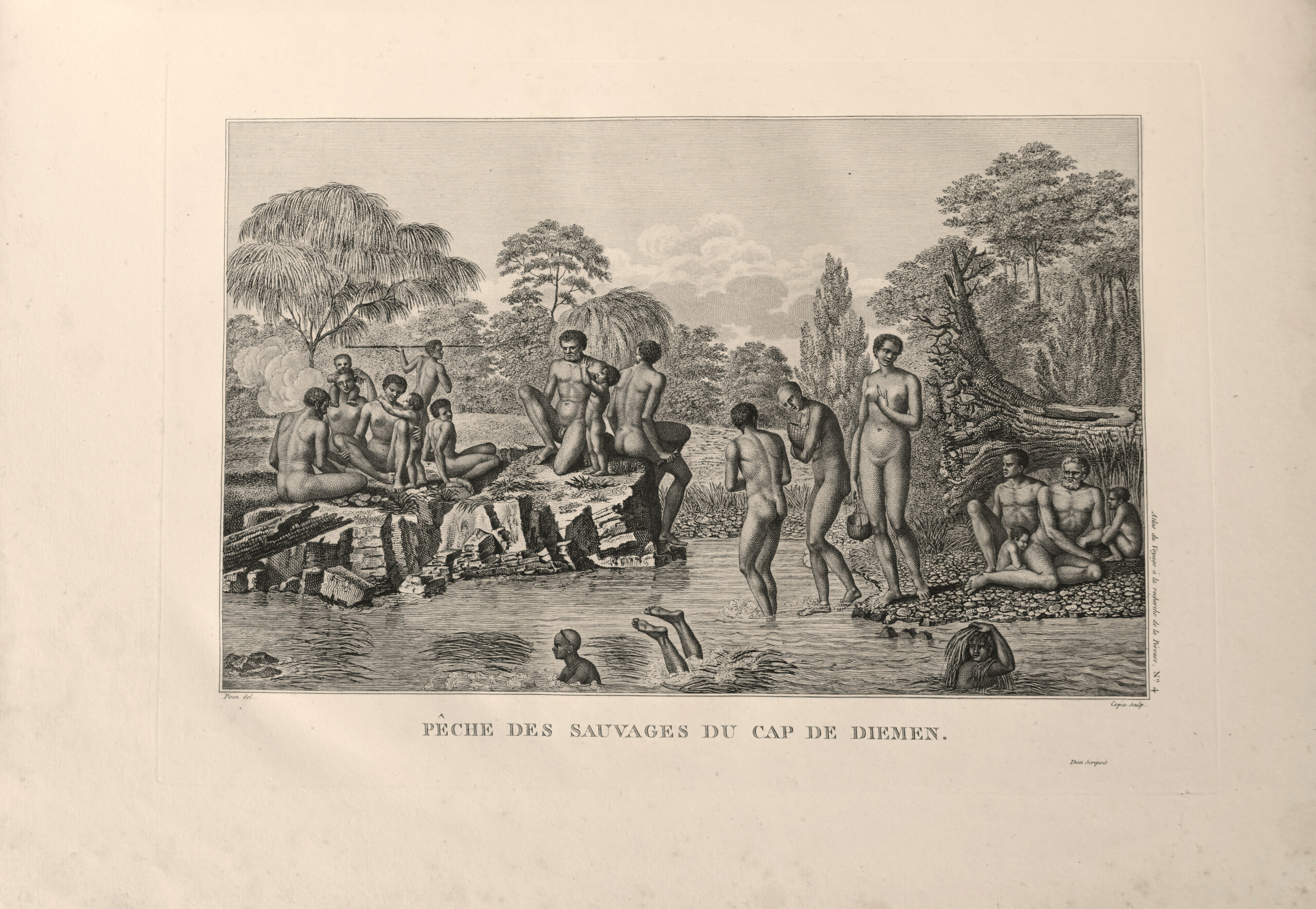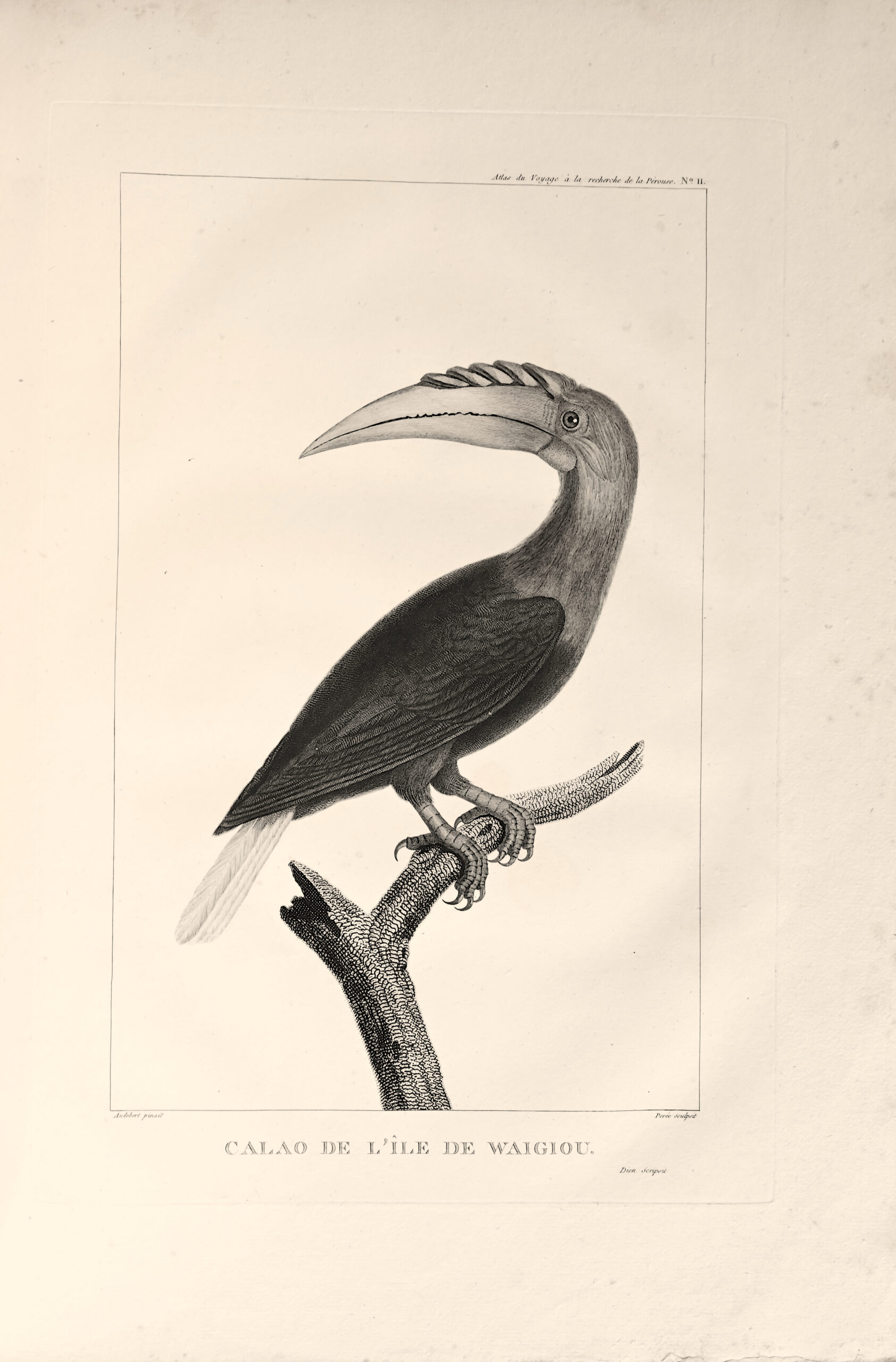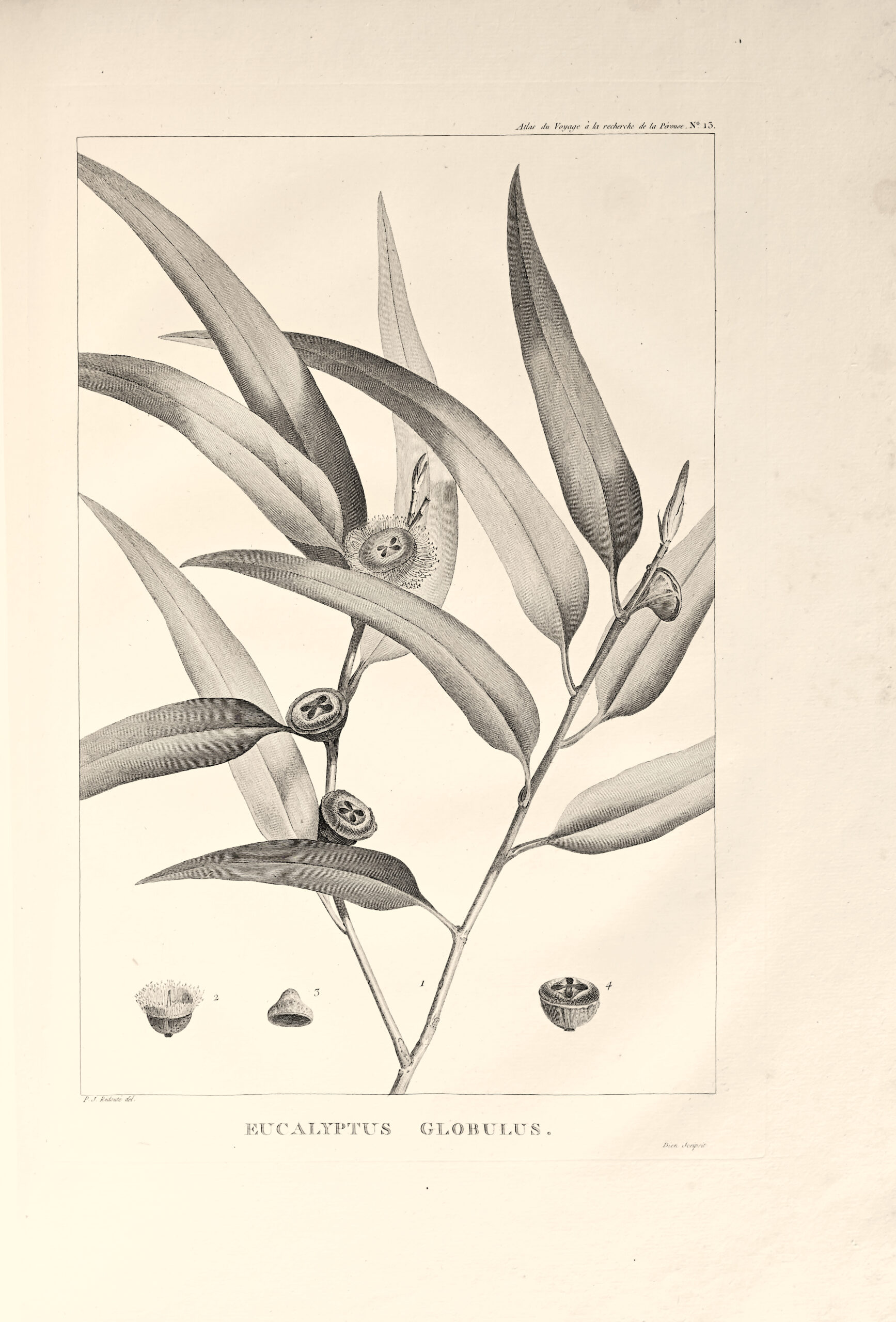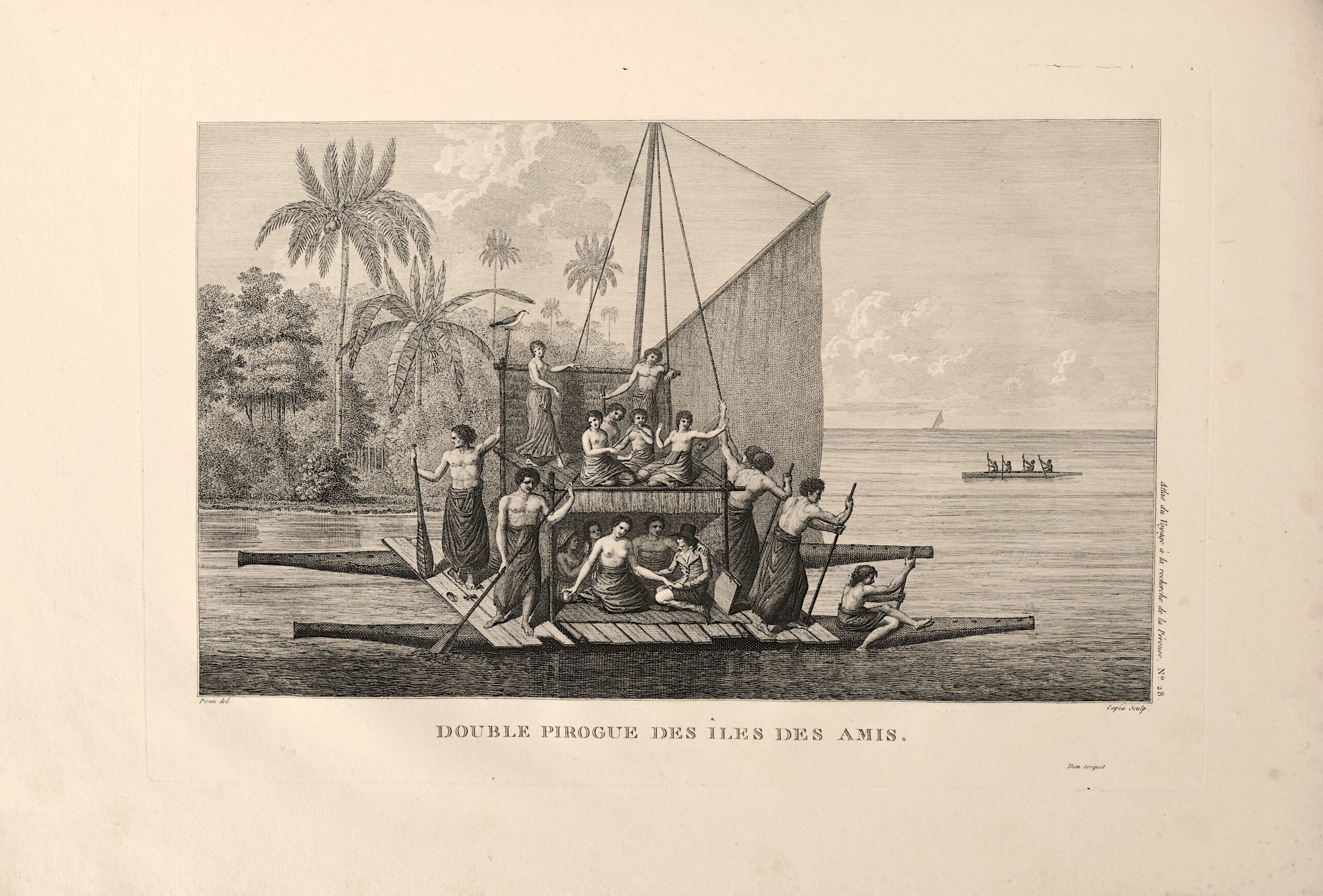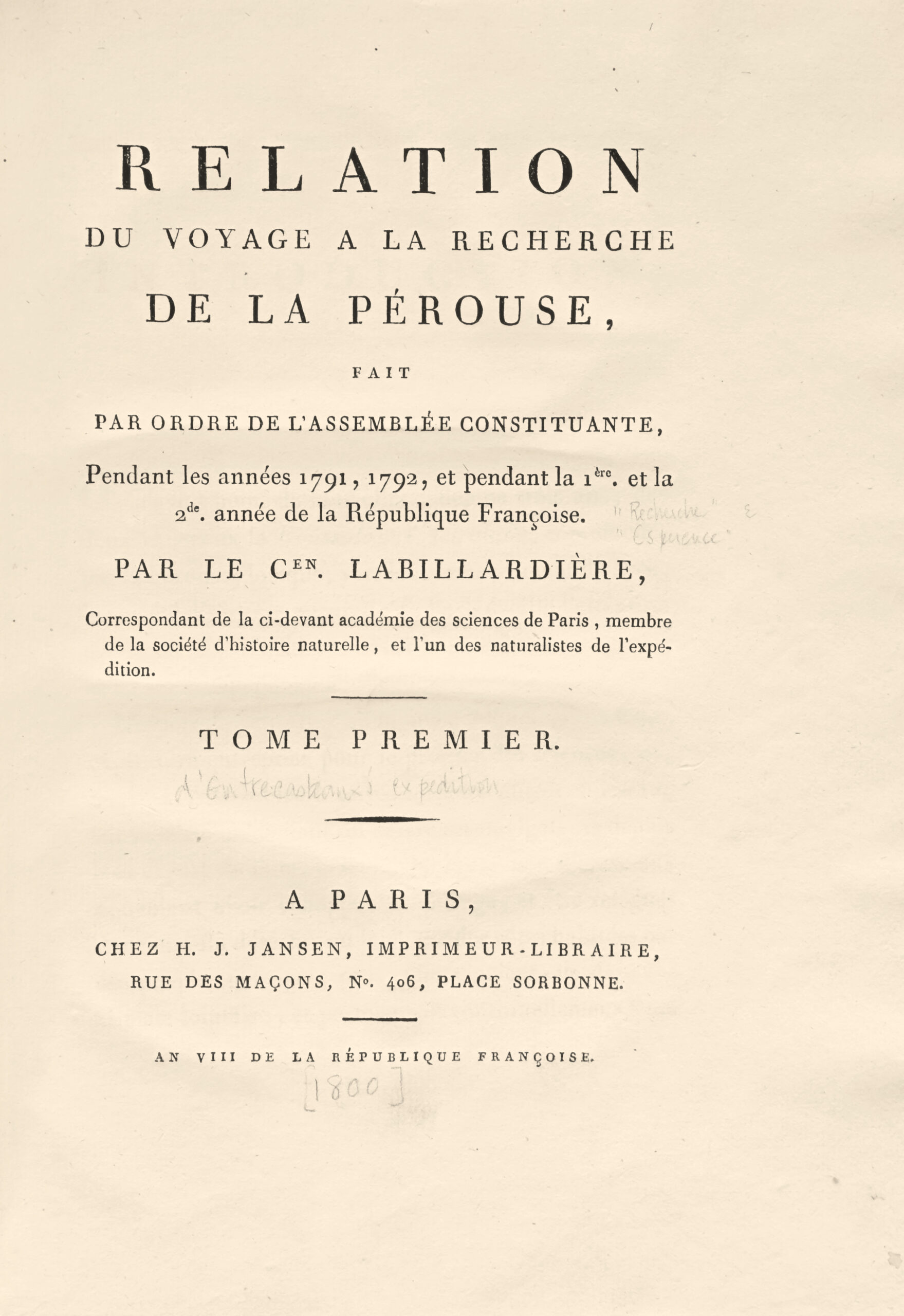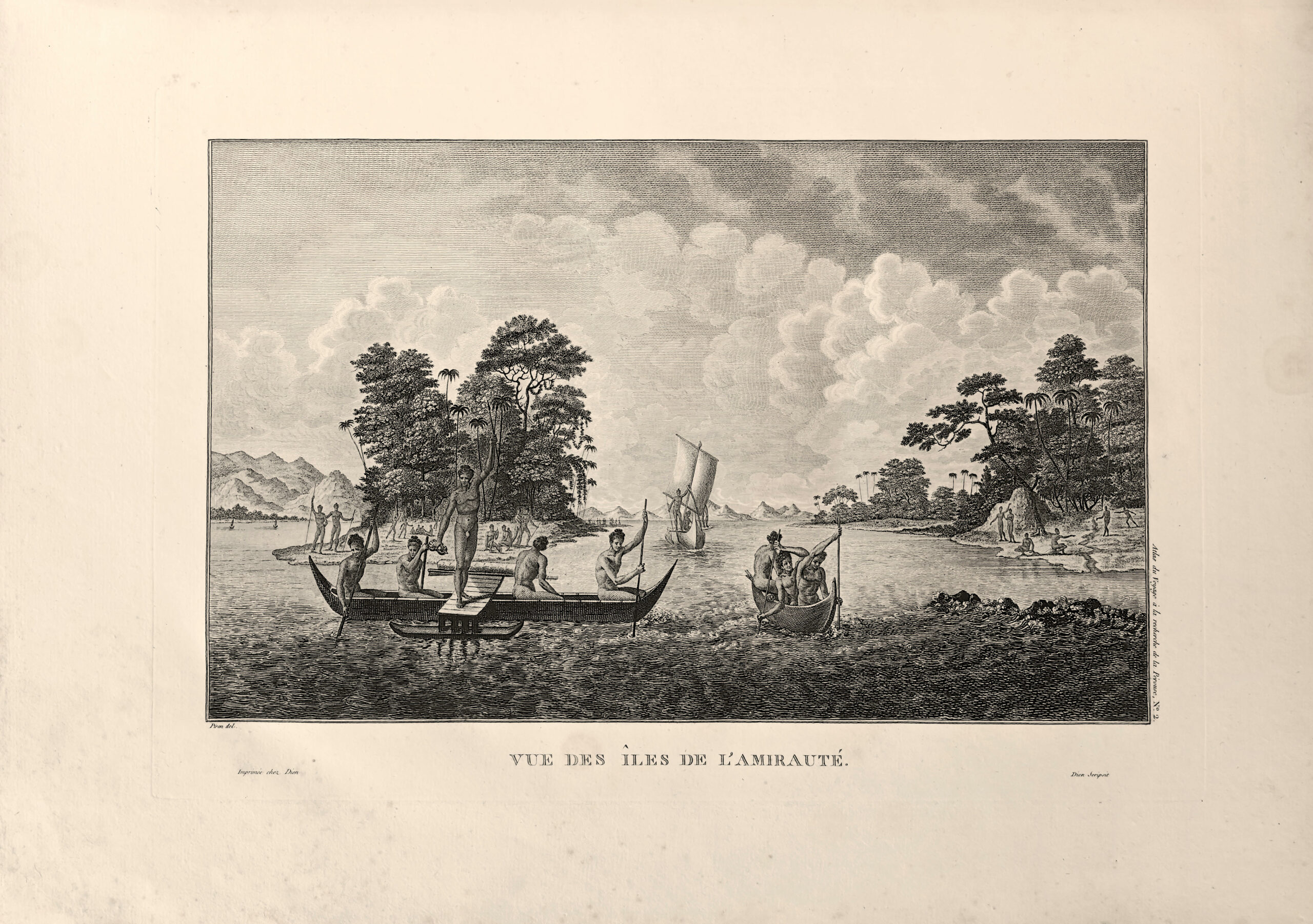Paris, chez H. J. Jansen, An VIII de la République françoise [1800].
2 volumes of text 4to [298 x 228 mm] of: I/ xvi pp., 442 ; II/ 332 pp., 113 pp. of vocabulary and of table, (1) p. of errata; 1 plano atlas [573 x 415 mm] of: 1 engraved title, 44 numbered plates including 1 double-page map. Some light foxing in the margin of some plates of the atlas.
Bound in uniform red half-shagreen with red buckram covers, gilt roulette around the covers, gilt crowned cipher stamped in the center of the covers, spines ribbed and decorated with gilt boats and crowned cipher repêted, untrimmed. Contemporary binding.
First edition of this “esteemed work”. (Brunet, III, 711). Nissen ZBI 2331; Sabin 38420. With the decree of February 9th 1791, the National Assembly took the decision to set up the expedition with “the double mission to look after Mr. de La Pérouse, according to the documents, instructions and orders they would be given, and to do at the same time alternative resêrch regarding science and trade”. Placed under the orders of de Bruny d’Entrecastêux and de Huon de Kermadec, this mission, in charge of trying to find the vessels of la Boussole and l’Astrolabe, was made of the fluyts la Recherche and l’Espérance. The fleet left Brest on September 28th 1791, accosting Tenerife on October 13th. La Billardière visited his famous peek and reported the natural history. On January 17th 1792, he put in at the Cape of Good Hope, where d’Entrecastêux received a message from Saint-Félix, commanding the station of the sês of India, and informed him that the English commodore Hunter was affirming he had seen men in French uniforms on the Admiralty Islands. La Billardière made the most of his stay to the Cape to explore the Table and Lion mountains, Stellenbosch and its surroundings. He even goes until Fransche-Hoek, meeting a French colony of emigrate protestant in 1675. He completed his collections with many little known plants or badly described until then. The expedition rigged out on February 16th. After a little more than two months of difficult sailing, the sails have dropped on the coast of Van-Diemen, in a port that received the name of Entrecastêux (April 23rd 1792), La Billardière and the other naturalists make several excursions on the land. The vessels from the expedition made a recognition mission of the south-west of Australia, Tasmania and New-Zêland. La Billardière, Claude Antoine Gaspard Riche (1762-1798) and Louis Ventenat (1765-1794) make the most of it collecting wide geological, botanical and zoological samples, and describing the aboriginal language of Australia. The expedition after a long and hazardous sailing, after having lost his chief and forty eight members of the crew, finally accosts on October 1793 in Java where the revolutionary wars had burst. Java is declared Dutch, the vessels are captured and La Billardière’s collection is sent to Grêt Britain. Hold successively in Samarang, then in Batavia, La Billardière was relêsed on Germinal 9th yêr III. He can finally rêch the Island de France, where he is welcomed at the botanical garden of Pamplemousses by Nicolas Céré; but his collections, containing over four thousand plants, of which three quarters were unknown species had been shipped to England. His former master, the famous Sir Joseph Banks (1743-1820) intercedes for him and obtains from the British authorities that the collections are sent back to him intact. The end of the text is made of several vocabularies. “The linguistic part is very developed and contains the following vocabularies: Malay, from the cape Diemen, the Friendly Islands, New Caledonia and the island Waygiou”. (Chadenat, n°99). First issue of the atlas which includes a large folding map on double-page of the Indian ocên and a part the Pacific ocên established by Barbié Du Bocage and engraved by D'Houdan and 44 plates: 24 plates of views, portraits of natives from the Friendly Islands, the Admiralty and New Caledonia, and some tools drawn by Piron; 14 Botanical plates after Redouté; 4 plates of birds after Audebert and one plate of spider, engraved by Dien, Copia, Maleuvre and Perée. “The atlas encloses 44 fine plates: views, costumes, various scenes, natural history, etc.” (Chadenat, n°613). A superb copy of this fascinating travel account preserved in its contemporary bindings bêring a crowned cipher.
See less information
